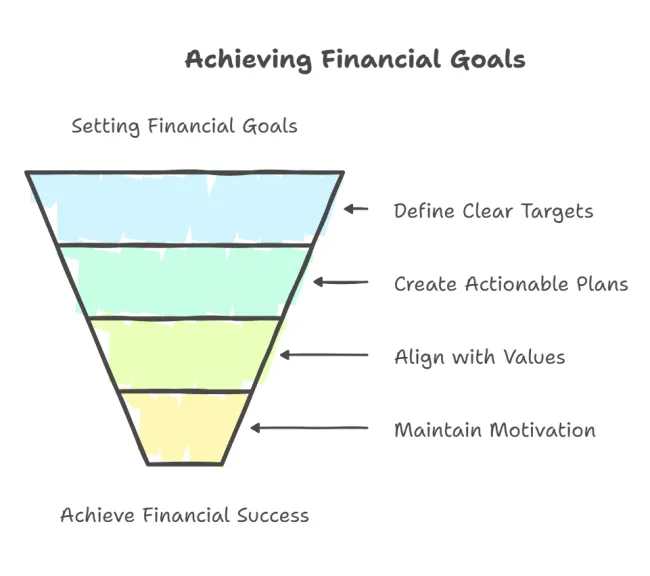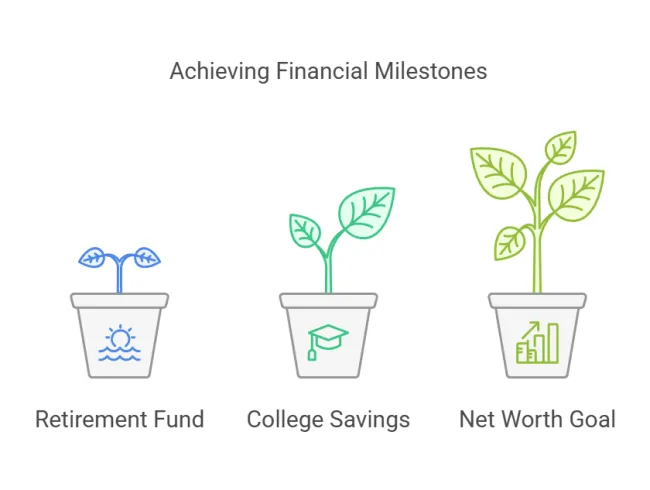
The SMART Way to Set Financial Goals You’ll Actually Achieve
Introduction: Why Setting Financial Goals the Right Way Matters
As a Certified Financial Planner™ (CFP®), I’ve worked with countless individuals and families who set financial goals but struggle to reach them. Many times, they have great intentions but lack a clear strategy to follow through.
That’s where structured goal-setting comes in. If you’ve ever set a New Year’s resolution and abandoned it by February, you’re not alone! Research shows that 91% of people fail to reach their New Year’s goals. Why? Because they don’t set clear, actionable targets.
In this article, we’ll explore how to create financial goals that are realistic, motivating, and aligned with your values—whether you use the SMART framework or prefer a more flexible approach.
What Makes a Financial Goal Effective?
A strong financial goal should be:
✅ Clear & Specific – Instead of saying “I want to save more,” define the exact amount and purpose.
✅ Measurable – Progress should be trackable—whether it’s saving a certain amount or paying off a debt balance.
✅ Realistic & Achievable – Goals should push you forward but still be within reach.
✅ Aligned With Your Values – Your goals should reflect what truly matters to you—financial security, homeownership, travel, philanthropy, etc.
✅ Time-Based – Set a timeframe to create urgency and accountability.
This approach—whether labeled SMART or not—ensures your goals are meaningful and actionable.
Thinking Beyond SMART: The Future-Focused Approach
While the SMART framework is a great tool, financial planning isn’t one-size-fits-all. At Future-Focused Wealth, we work with clients to craft goals that inspire and excite them, not just ones that fit neatly into an acronym.
Instead of just focusing on numbers, we encourage clients to dream big and think about what financial success truly means to them. We ask:
💡 What would financial freedom look like for you?
💡 How would it feel to reach your long-term goals?
💡 What impact do you want your financial decisions to have on your family, career, and legacy?
By focusing on purpose-driven financial planning, we ensure that every goal aligns with the life you want to build.
Examples of Strong Financial Goals
Short-Term Goals (0-2 Years)
💰 Save $1,200 for an emergency fund by setting aside $100/month for 12 months.
💳 Pay off $3,000 in credit card debt within 18 months by making $170 monthly payments.
🎁 Set aside $500 for holiday gifts by saving $50/month for 10 months.
Mid-Term Goals (2-5 Years)
🏡 Save $20,000 for a house down payment in five years by contributing $333/month.
🎓 Pay off $15,000 in student loans within three years by making $417 monthly payments. (
📈 Invest $5,000 in a Roth IRA over two years by contributing $208/month. Growing Your Savings Rate is important for financial success!
Long-Term Goals (5+ Years)
🔹 Accumulate $500,000 for retirement by investing $500/month for 30 years.
🔹 Save $50,000 for a child’s college education in 10 years.
🔹 Generate $1 million in net worth by age 50 through diversified investing.
The Psychology Behind Achieving Financial Goals
Did you know that writing down your goals makes you 42% more likely to achieve them? Studies show that people who create a visual roadmap of their goals are significantly more successful than those who rely on mental notes.
Tips to Stay on Track:
📌 Automate savings – Set up automatic transfers to your savings or investment accounts.
📌 Use a budgeting app – Tools like Mint, YNAB, or Personal Capital can track your progress.
📌 Find an accountability partner – Share your goal with a friend, financial advisor, or mentor.
📌 Celebrate milestones – Reward yourself when you reach key savings or debt-payoff goals.
Final Thoughts: Take Control of Your Financial Future
Financial goal-setting isn’t just about numbers—it’s about creating the life you want. Whether you’re saving for a dream home, paying off debt, or planning for retirement, a structured approach will help you stay focused, motivated, and successful.
📩 Need expert guidance? Let’s create a financial plan together! Schedule a consultation today.
FAQs: Setting and Achieving Financial Goals
1. How do I set financial goals that I can actually achieve?
Use the SMART framework, set realistic timelines, and align goals with your values.
2. How often should I update my financial goals?
At least once a year or after major life changes (new job, marriage, baby, etc.).
3. What’s the biggest mistake people make with financial goals?
Setting vague goals with no clear action plan or deadline.
4. Should I prioritize saving or investing when setting financial goals?
Both! Build an emergency fund first, then invest for long-term growth.
5. How do I stay motivated when working toward financial goals?
Track your progress, celebrate small wins, and adjust your plan as needed.






